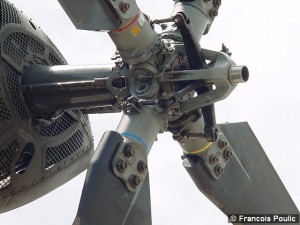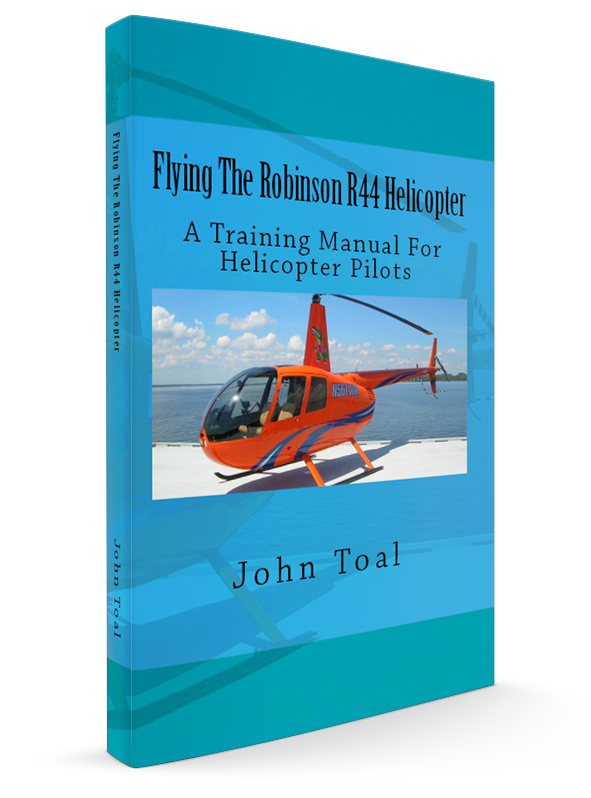Tail Rotor Failure
(Updated on 14th February 2021)
 Different Types of Tail Rotor Failure
Different Types of Tail Rotor Failure
While training for an EASA PPL(H) licence, you will be told about tail rotor failures. There is no flight exercise for tail rotor failures under the EASA system however I like to demonstrate the different types of tail rotor failure that can occur during flight. They are as follows:
- Tail rotor failure in the hover
- Tail rotor failure in forward flight
- Stuck left pedal
- Stuck right pedal
Although tail rotor failures are extremely rare, I have been unfortunate enough to have experienced one. Because of my training, I was able to identify it and land safely. If you have a sufficiently large, flat area, there is no reason why you should not be able to do the same should this ever happen to you.
Tail Rotor Failure in the Hover
When the tail rotor fails while hovering, the nose of the helicopter will yaw rapidly to the right (in helicopters that have a rotor that turns anti-clockwise when viewed from above). You will automatically apply more and more left pedal to try and compensate but this will have no effect and you will eventually reach a point where you have full left pedal applied but the helicopter is still yawing to the right. You should now have realised that the tail rotor is not working.
You must immediately roll off the throttle and perform an engine off landing from the hover. By rolling off the throttle, you will have eliminated the torque and the helicopter will stop yawing immediately. Keep the helicopter level and let it settle. Just before the skids touch the ground, start raising the collective to reduce the rate of descent.
If your helicopter type uses a correlator to adjust the throttle (e.g. R22, R44, H269) make sure that you roll the throttle past the detent to prevent the correlator from opening the throttle up again as you raise the collective.
Tail Rotor Failure in Forward Flight
In forward flight, a tail rotor failure may not be noticed right away if you are traveling at high speed. At lower speeds it is noticeable by a nose right yaw (in helicopters that have a rotor that turns anti-clockwise when viewed from above). If airspeed is reduced, the helicopter will yaw further to the right.
The only option here is to eliminate the torque by lowering the collective and closing the throttle. Obviously you will have to perform an engine off landing but this should not be a problem to you if you have flat ground below.
On touch down, try to run on slightly. The helicopter will try to turn to the left as it slides along the ground. This could cause the helicopter to roll over but there is a way that you can prevent this from happening. If you open the throttle slightly, the increased torque will turn the nose to the right and if you close the throttle, the decrease in torque will turn the nose to the left.
I use a simple trick for this. Stick your left index finger straight out as you grip the collective. When you open the throttle, your index finger points right. This is the direction the nose will yaw and it will yaw by approximately the same number of degrees as the movement your index finger made. (Vice verse for closing throttle). So, by adjusting the throttle, you can prevent the aircraft from rolling over.
Stuck Left Pedal
It is possible that you may find yourself in the position that the left pedal is stuck in position (to the left) during flight. This could occur due to different reasons and it has been known to happen. The pedals will be locked in position. How do you land? Do NOT enter autorotation as you would for a normal tail rotor failure. Instead, experiment with different speed and power settings to get a feel for how much the nose yaws at different speeds. Set yourself up for a shallow approach (preferably to a concrete or tarmac runway where the helicopter can slide easily and the skids will not dig in). As you lower the collective for the descent, the nose will yaw even further to the left. Don’t worry about this. Gradually wash off the speed and be prepared for the helicopter to be yawing up to 30 degrees to the left. As the aircraft loses speed it will eventually lose translational lift and start to sink. You should only be a few feet above the ground at this point. As you raise the collective up to reduce the sink rate, the increase in torque will make the nose yaw right and the helicopter starts to straighten up. when the nose is almost straight, accept the speed and by using a combination of slightly forward cyclic to pitch the nose slightly down and also adjusting the throttle and collective; squeeze the helicopter down onto the runway. With a little practice, this is quite easy to do – but it does take practice.
Stuck Right Pedal
If it is the right pedal that is stuck, again, you must not enter autorotation. As with stuck left pedal, set yourself up for a shallow approach. Lowering the collective to start a descent will automatically make the nose yaw left due to the reduction in torque. You will have time to experiment with different speed and power settings to see what keeps the nose straight. Find a speed and power setting that gives a slight rate of descent at 10 – 30 knots while also keeping the nose straight. Do your approach with the intention of setting up these parameters before touching down. If it does not feel right on the approach, feel free to go around and try again. At a few feet above the ground and with the nose slightly yawing to the right, gently lower the collective. This brings the nose straight again and also makes the helicopter descend. As you touch down, use the throttle to control heading. Simple.
Instruction
Whether you are a student or a qualified pilot, it is beneficial to get an instructor to show you these tail rotor failure procedures every now and again. You never know when it might come in handy to be able to handle tail rotor failures.
Did you enjoy this post? Why not leave a comment below and continue the conversation, or subscribe to my feed and get articles like this delivered automatically to your feed reader.








Comments
No comments yet.
Leave a comment